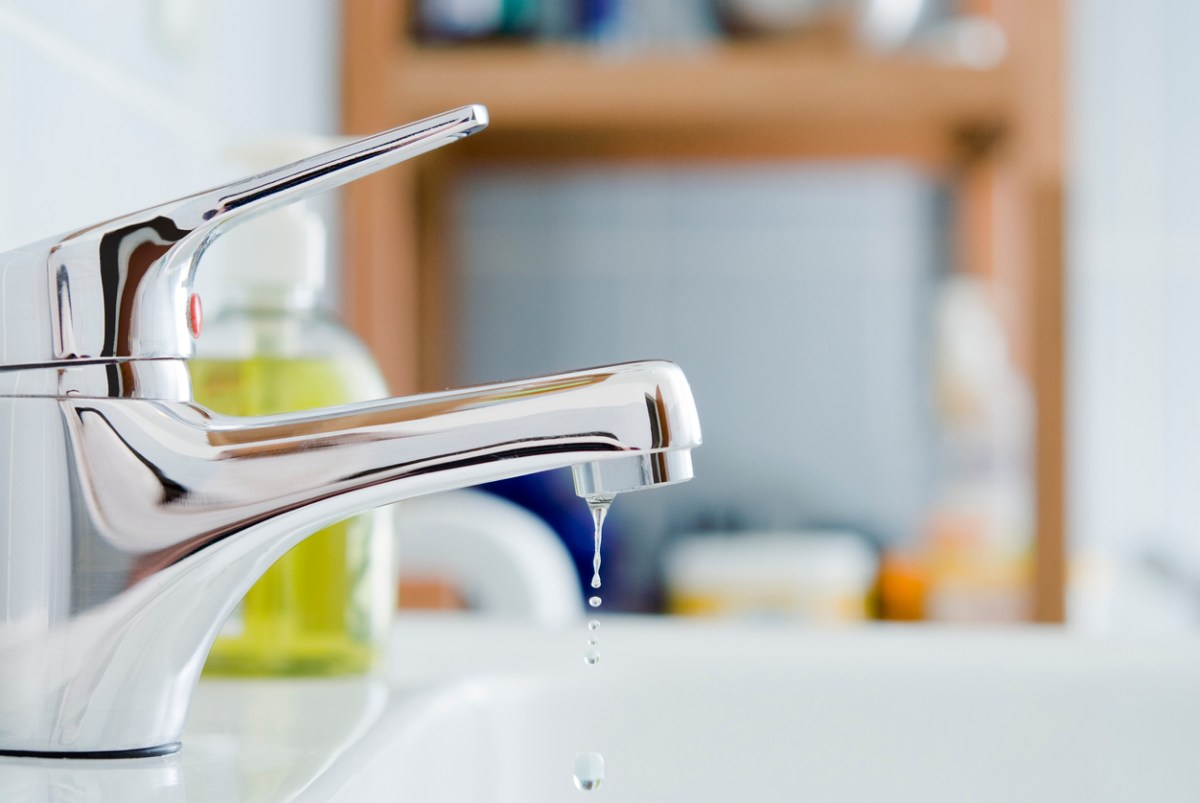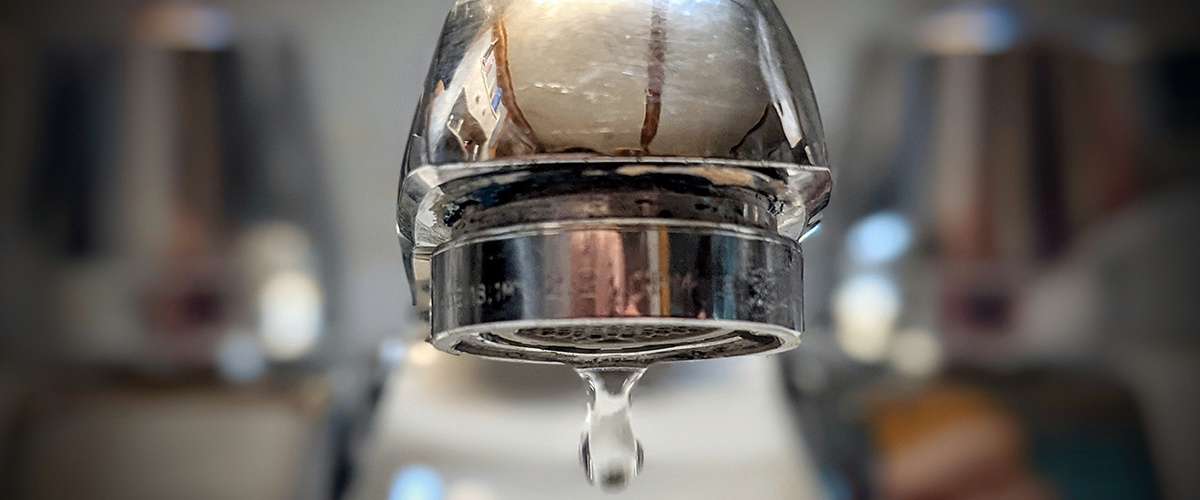Discovering the Significance of Fixing a Faulty Faucet
Discovering the Significance of Fixing a Faulty Faucet
Blog Article
We've stumbled on the article involving What Causes Leaky Faucets & How To Fix Them listed below on the web and decided it made good sense to relate it with you here.

Trickling taps could seem like a minor inconvenience, but their impact goes beyond just the annoyance of the sound. From drainage to incurring unnecessary monetary costs and wellness threats, overlooking a trickling tap can lead to numerous repercussions. In this write-up, we'll explore why it's essential to resolve this usual house problem promptly and properly.
Waste of Water
Environmental Effect
Dripping taps add substantially to water wastage. According to the Epa (EPA), a single faucet trickling at one drip per secondly can waste greater than 3,000 gallons of water each year. This not only stress water sources however additionally affects ecological communities and wildlife based on them.
Financial Expenses
Raised Water Bills
Beyond the environmental effect, leaking taps can blow up water expenses considerably. The gathered wastefulness over time translates into higher utility expenses, which could have been avoided with timely repair work.
Potential Residential Or Commercial Property Damages
Additionally, prolonged leaking can cause damage to fixtures and surface areas surrounding the faucet. Water accumulation can trigger staining, deterioration, and even architectural problems if left neglected, leading to extra fixing expenses.
Wellness Issues
Mold And Mildew and Mold Growth
The constant existence of wetness from a trickling faucet produces an excellent environment for mold and mildew and mold development. These fungi not just endanger interior air quality however likewise pose health and wellness threats, specifically for people with breathing conditions or allergies.
Waterborne Illness
Stagnant water in trickling taps can become a breeding ground for microorganisms and various other pathogens, raising the risk of waterborne diseases. Contaminants such as Legionella bacteria thrive in stagnant water, potentially bring about significant illnesses when consumed or breathed in.
Do it yourself vs. Expert Repair work
Benefits and drawbacks of DIY Repair Work
While some might attempt to fix a dripping tap themselves, do it yourself repair services come with their very own collection of challenges. Without proper expertise and tools, do it yourself attempts can exacerbate the concern or result in insufficient repair services, extending the problem.
Advantages of Hiring an Expert Plumber
Hiring an expert plumber ensures that the underlying source of the leaking tap is addressed successfully. Plumbings possess the expertise and equipment to identify and fix tap issues efficiently, saving time and lessening the threat of more damages.
Step-by-Step Guide to Repairing a Dripping Faucet
Tools Called for
Prior to attempting to repair a dripping faucet, gather the essential devices, including a flexible wrench, screwdrivers, substitute parts (such as washers or cartridges), and plumber's tape.
Common Tap Issues and Their Solutions
Identify the sort of faucet and the specific concern triggering the drip. Usual problems consist of damaged washing machines, corroded valve seats, or damaged O-rings. Refer to maker guidelines or online tutorials for detailed assistance on repair work.
Preventive Measures
Regular Maintenance Tips
To stop trickling taps, perform regular maintenance such as cleaning up aerators, examining for leakages, and changing damaged parts promptly. Additionally, take into consideration installing water-saving tools or updating to much more reliable components.
Relevance of Prompt Repair Works
Attending to trickling taps as soon as they're discovered avoids more water wastage and prospective damages, inevitably conserving both water and cash over time.
Effect On Residential Or Commercial Property Value
Perception of Well-Maintained Residential Or Commercial Property
Maintaining a residential property in good condition, including resolving upkeep problems like dripping taps, boosts its viewed value and charm among potential customers or occupants.
Influence on Resale Worth
Qualities with properly maintained plumbing fixtures, consisting of faucets, command greater resale values in the real estate market. Attending to leaking taps can contribute to a favorable impact throughout property inspections and negotiations.
Environmental Obligation
Private Payment to Conservation
Taking obligation for repairing leaking faucets aligns with broader efforts toward water conservation and ecological sustainability. Every individual's activities jointly make a substantial effect on preserving valuable resources.
Lasting Living Practices
By prioritizing punctual fixings and embracing water-saving routines, people contribute to sustainable living practices that profit both present and future generations.
Final thought
Attending to a leaking faucet exceeds simple comfort; it's an essential step towards saving water, minimizing monetary costs, and safeguarding health and home. Whether through do it yourself repair services or professional aid, doing something about it to take care of dripping taps is a small yet impactful means to promote liable stewardship of resources and add to a healthier, extra sustainable future.
How to Fix a Dripping or Leaky Faucet
A leaking faucet is one of the most common problems that homeowners encounter, but it being commonplace doesn’t make it any less annoying. The constant drip drip drip of a leaking bathtub faucet, showerhead, or sink tap can disturb your home’s serenity. Left neglected, a dripping faucet can also result in higher water bills and discoloration or mold growth in your sink or plumbing fixtures.
Fortunately, you don’t have to be a trained plumber to know how to stop a dripping faucet. With some basic tools, replacement parts, and a little patience, leaky faucet repair is a breeze. In this article, we’ll explain what causes dripping faucets and how you can fix them.
What Causes a Leaking Faucet?
Kitchen and bathroom faucets come in all manner of designs, but most involve some combination of valves, O-rings, seals, and washers. The O-ring is usually the weakest link, but any one of these pieces can wear down over time. Heat, moisture, temperature fluctuations, minerals, mold, and movement can contribute to warping and corrosion, breaking the watertight seal. This just comes with the territory of being a homeowner. Everything is always subject to wear and tear, and some component parts of your appliances and fixtures need to be replaced on occasion. At least replacement O-rings are cheap!
More rarely, dripping faucets can be a symptom of excessively high water pressure. Were this the case in your home, you would probably notice that the leak is not isolated to one faucet. Water pressure issues are harder to resolve on your own. We recommend contacting a professional plumber if you suspect your water pressure is too high.
How to Fix a Dripping Faucet
Pipe wrench or monkey wrench Allen wrench set Screwdrivers Old towel or rag Shut off the water.
Before you do anything, you need to turn off the water to keep from drenching your kitchen or bathroom. You should find a valve under the sink and against the wall. Once you’ve turned this valve, try turning the faucet on to confirm that the water source has been cut off.
If you can’t locate your local valve for the faucet you’re working on, you can always shut off the water to the house at the main valve. Of course, this will prohibit anyone from using the sinks, showers, or toilets while you’re working on the faucet that’s giving you trouble.
Plug or block the drain.
You’ll be disassembling the faucet and removing some small bits of hardware. Plug the drain with a stopper or rag to avoid the possibility of a small screw falling into your P-trap.
Take apart the faucet assembly.
There are several varieties of kitchen and bathroom faucets, each with its own manner of assembly. For detailed instructions on how to disassemble your faucet, you can refer to the fixture’s manual or contact the manufacturer. If you know whether you have a ball, disc, cartridge, or compression faucet, you can find detailed schematics online.
In general, you need to begin by removing the faucet handles. You might notice a small screw that you’ll need to remove with a screwdriver or Allen wrench. If you don’t see any visible securing hardware, it’s likely hidden under a decorative cap that can be unscrewed or popped off with flathead screwdriver.
Remove each piece methodically, consulting a schematic when necessary. Take notes or arrange the pieces in such a way to make it easier to correctly reassemble the faucet later.
Remove the cartridge.
Once you’ve removed the handles and securing hardware, you should be able to remove the valve cartridge or stem. Some cartridges will slide right out. Other faucet models will require you to loosen a nut with a pipe wrench before you can remove the valve stem.
Examine the exposed hardware.
With the cartridge or stem removed, inspect the component parts. Check the rubber O-rings for wear and tear. Also examine the seat washer for corrosion or other damage. These pieces are usually the responsible parties for a dripping faucet, but it’s worth inspecting the other component parts while you have the faucet disassembled.
Find replacement parts.
Once you’ve identified which faucet component has failed, find an identical replacement. Your local hardware store should have O-rings, seat washers, and other standard components in stock. If you have a luxury or uncommon faucet, you may have to contact the manufacturer for a replacement part.
It’s a good idea to take your old parts with you to the hardware store so you can compare them with the store’s inventory and be sure you’re purchasing the correct replacement.
Reassemble the faucet.
With your new parts in hand, reconstruct the faucet and handles. Don’t be tempted to overtighten screws or nuts. You might think this could create a better seal, but it can instead damage or bend a delicate part of the assembly and create a new problem for you.
Turn on the water and test the faucet.
The only thing left to do is test your work. Unplug the sink, turn the water back on, and try the faucet. Congratulate yourself on a job well done!
https://www.libertyhomeguard.com/how-to-fix-a-dripping-or-leaky-faucet/

I was guided to that write-up about Leaky Faucets: Why They Happen & What to Do About Them from someone on our other site. Feel free to set aside a second to share this blog post if you appreciated it. I love your readership.
Report this page